Yes, Sandhill Cranes (Antigone canadensis) mate for life. But this is so much more fascinating than a simple yes or no answer.
I’ve spent a lot of time observing, photographing, and admiring these incredible birds over the years, and these birds are constantly battling the Loggerhead Shrike as my favorite avian species. And after the research I’ve done on them for this article, my love for them has only grown.
In this article, I’m going to touch on two main topics:
- The complex social lives these birds have.
- My theory as to why Sandhill Cranes mate for life.
So now that we’ve laid out the roadmap for this mesmerizing topic let’s dive in!
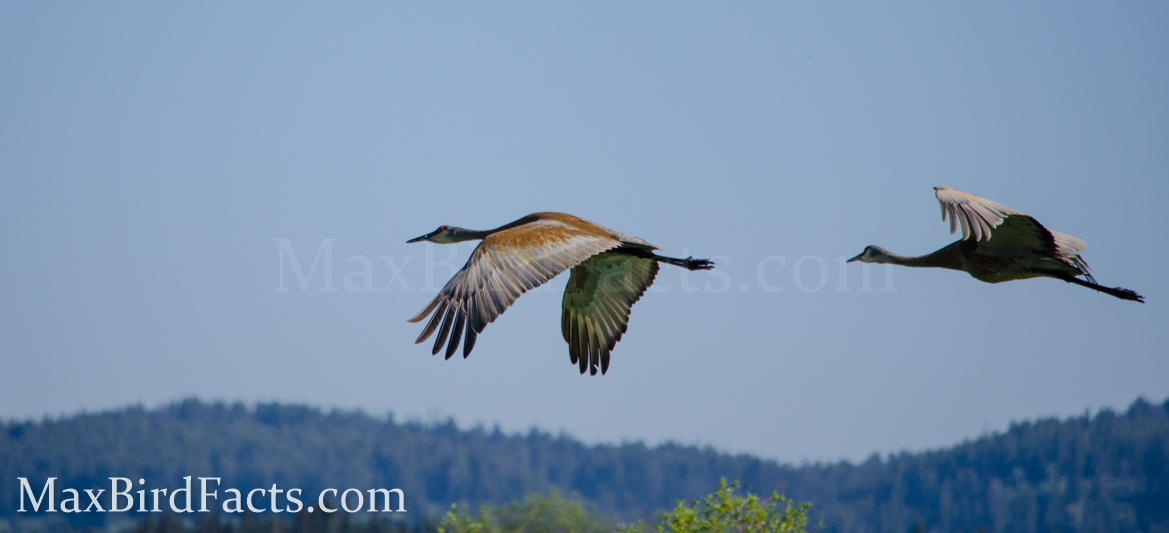
Creating The Bonds That Will Last A Lifetime
I think it is essential to start by talking about the complex social behaviors these birds perform before diving into the specifics of pair bonding and the reasons they maintain their relationships.
Sandhill Cranes can live up to 20 years in the wild. This is a notably old age in the world of birds, except, of course, for parrots and their relatives.
They can learn massive amounts of information with this long life, but they can also share it with their offspring or other party members.
Looking at long-lived species (elephants, cetaceans, parrots, primates, etc.), we see a common trend of thinking of these as intelligent animals. However, we can even see this intelligence in short-lived species, notably cephalopods (octopus, cuttlefish, squid, and kin).
The problem animals with a shorter lifespan face is their inability to gain and pass on knowledge to their young. Octopus species will starve themselves while protecting their eggs from predators, and this robs their offspring of gleaning the wisdom of their parents and forces them to endure the same mistakes they did.
Because cranes are highly social, monogamous, and share the burden of parenthood, they can pass on all of their experience to their progeny. Moreso, these teachings only grow over the hundreds of thousands of generations as they are handed from parent to child.
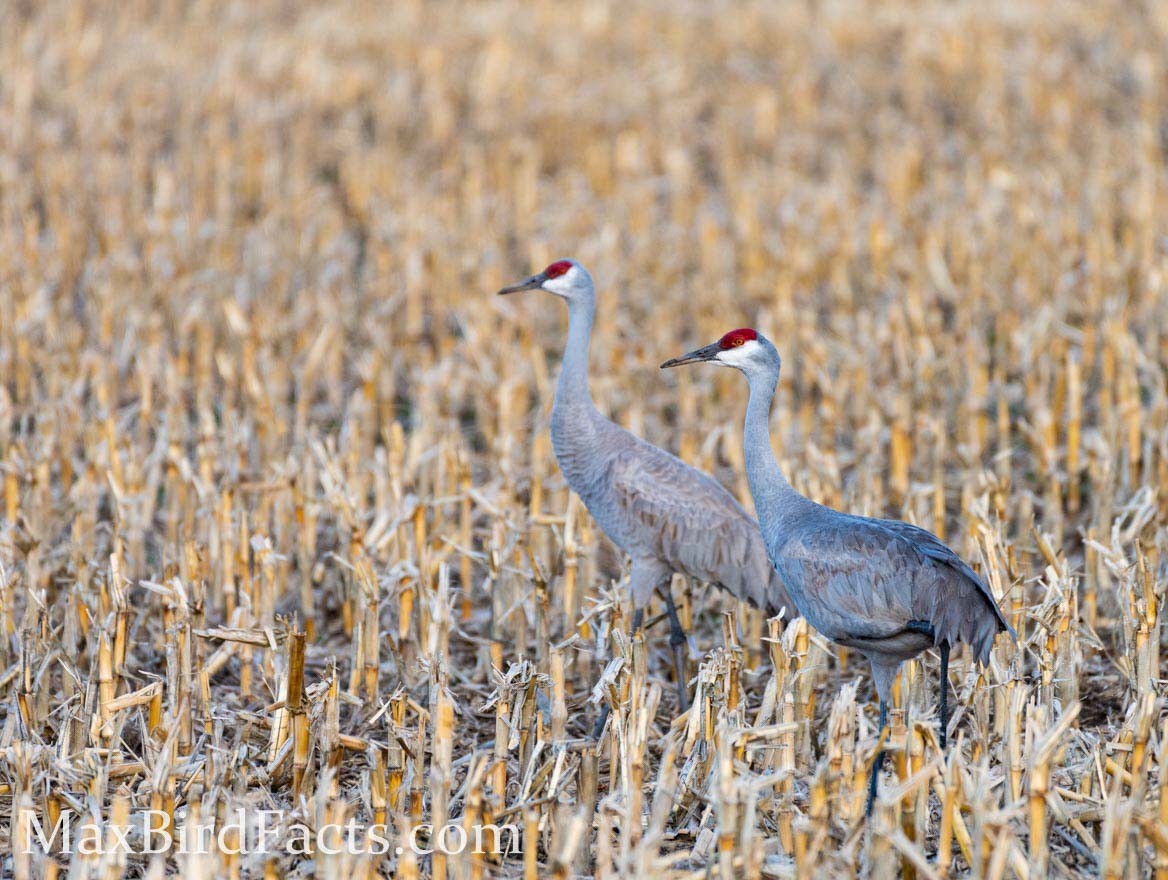
I will acknowledge that the avian brain lacks the folds many mammalian brains have that allow a greater surface area for neurons and, in turn, allow better cognitive function. However, research that has been conducted over the past several decades trying to understand the bird brain better has led to some remarkable findings.
We now know that nearly the entire surface of the frontal lobe can produce complex cognitive function, rather than just a tiny percentage associated with the cerebrum. There have also been studies into swifts and swallows, showing that even though their optic lobe is relatively small compared to other birds, they have incredible eyesight.
The avian world is full of attempts to become as efficient as possible, and they are all so captivating to observe. New studies constantly question the perceptions we currently hold of the creatures around us.
I’m telling you all of this because I think it is vital that we change how we interpret animals’ intelligence. The way we do some things would make absolutely no sense in their world, so I don’t think it is fair to put that same lens over how we try to justify why they perform certain behaviors.
One of the most amazing things I’ve seen in the natural world is the Sandhill Crane migration through Nebraska’s Central Platte River Basin. Throughout February and March, hundreds of thousands of cranes file through this region to rest and recharge on their journey from the southern border of the US, ending in the northern reaches of Canada and Alaska.

During this migration, groups of cranes will stick together for the 3,500-mile voyage. Family units make up the bulk of these companies, but some will consist of ragtag groups of bachelors and nonbreeding adults.
Yearling cranes will cling to their parents, learning the route to their annual rutting grounds. Along the path, they will learn how to vocalize like their parents, communicate with other cranes, and perform the iconic mating dance of the Sandhill Crane.
When traveling, multiple families will gather together to form these sieges. These can range from a few dozen birds to several thousand. It is truly a jaw-dropping sight to witness a whole cornfield of cranes lift as one and fill the air with their deafening bugles.
Even in these massive flocks, you can easily pick out family groups of parents with their yearlings. Still, they stick to the larger groups for protection while they forage and refill their fat reserves before continuing onto the last leg of their odyssey.
The importance of this migration cannot be understated. It is one of the most significant stimuli from natural selection on these birds, but it also teaches them everything they will need to know for the rest of their lives.
If you would like to read more about this mind-blowing migration, you should check out my other articles on Sandhill Cranes:
- What Do Sandhill Cranes Eat – Eating Bugs For Growth
- Where Do Sandhill Cranes Sleep – Lost Toes and Frigid Rivers
Their parents will kick them out at the end of the journey and force them to strike it out independently. Doing so allows the parents to raise a new brood and forces the yearling to wander and find themselves.
Over the next one to two years, the young crane will explore their range, meet up and flock with other adolescents, and potentially find their mate. This is a critical growth stage for immature birds, like a teen moving away for college.
After the crane has reached maturity, they will seek out their life partner. This is a pivotal point in their lives because this will be who they spend the rest of their life with. Because of this, both the male and female cranes are very selective during courtship.
The courtship dance is one of the most beautiful displays I’ve seen conducted, mainly because of its subtleties.
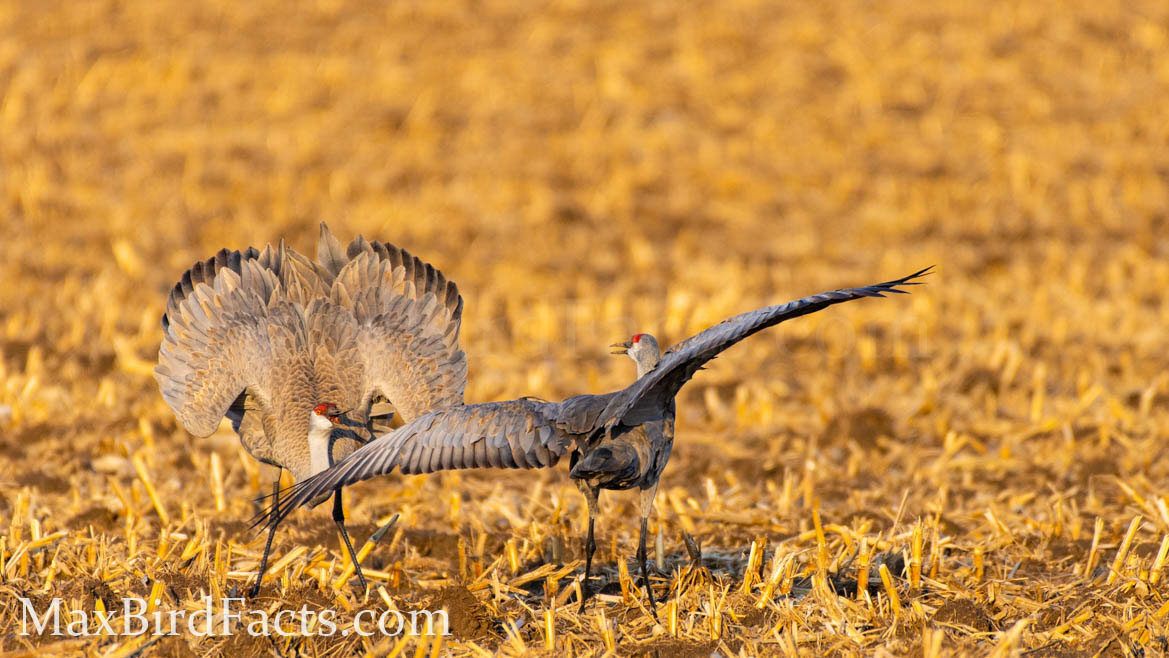
It starts with the male crane grabbing a clump of vegetation and tossing it into the air to attract the female’s attention. Once the female crane has accepted the male’s invitation to dance, they will exchange a bow, tucking their head and neck close to the body and slightly opening and pushing their wings upward.
Next, the male sandhill will arch his head backward, nearly touching his back while producing a long bugling call. The female follows this by pulling her head upward and repeating the male’s song, but her’s is a higher pitch and shorter length. The pair will then begin hopping around each other, extending their wings, all while continuing these unison calls.
These leaps are interspersed with additional bows from both parties. When a pair does this courtship dance in a large siege, other cranes will often join in with their partners.
There are several other displays Sandhill Cranes will employ to build and maintain their pair bond, but the courtship dance is by far the most captivating.
That same unison call made during the dance will be used countless times throughout the relationship. Still, it will nearly always follow the same trend of the male producing the initial call, followed by the female’s lighter and shorter reply.
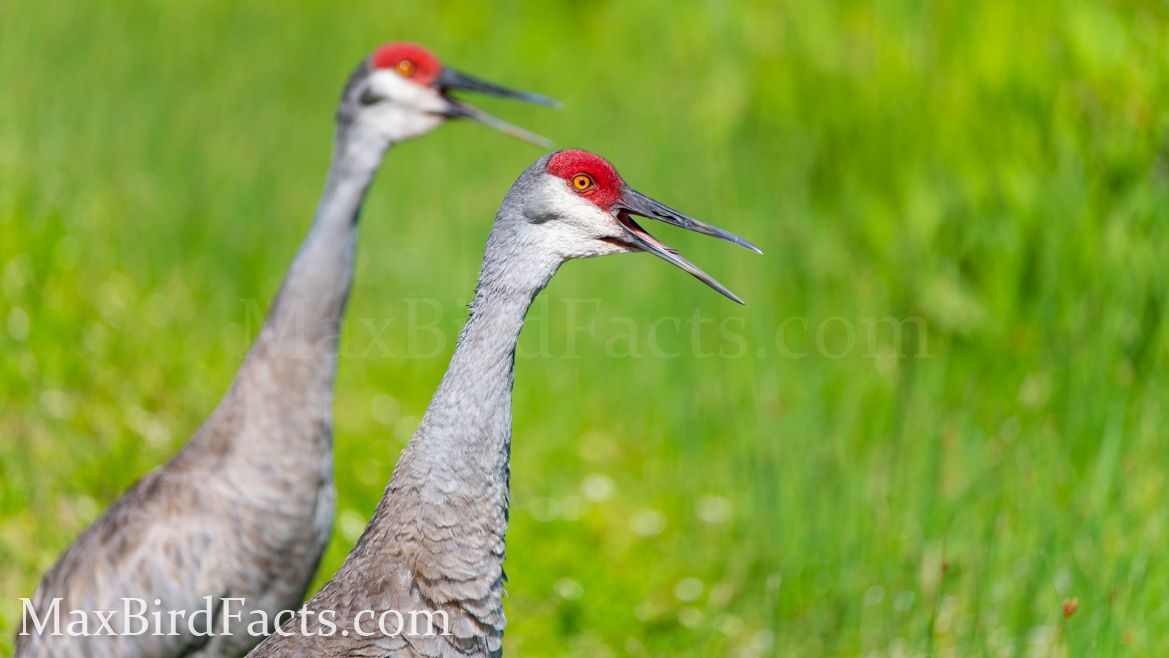
Why Do Sandhill Cranes Mate For Life?
As we talked about above, sandhills are exceptionally social creatures. Cranes tend to stay out of large groups outside of migration and breeding season. However, mating pairs of cranes will stick together for as long as they live.
Sandhill Cranes are truly monogamous, which is extremely rare in the animal kingdom. Unfortunately, there is a prevalent misconception that virtually every avian species are truly monogamous, but this is very wrong.
Since DNA testing and collection, researchers have found that nearly all the species we thought were truly monogamous were just socially monogamous. The difference is that socially monogamous species will appear as if they are only with one partner but will secretly have other partners.
This is a topic for another article, but I think it is crucial to bring up. Having a species as social as sandhills are and staying faithful to one partner for nearly twenty years is remarkable.
There are massive benefits to maintaining the relationship. Employing biparental care allows the split responsibility of childrearing, lessening the load for each parent. It also means one crane can stand watch while the other is teaching their colts how to preen, forage, and vocalize.
I think one of the primary reasons Sandhill Cranes mate for life is for their offspring.
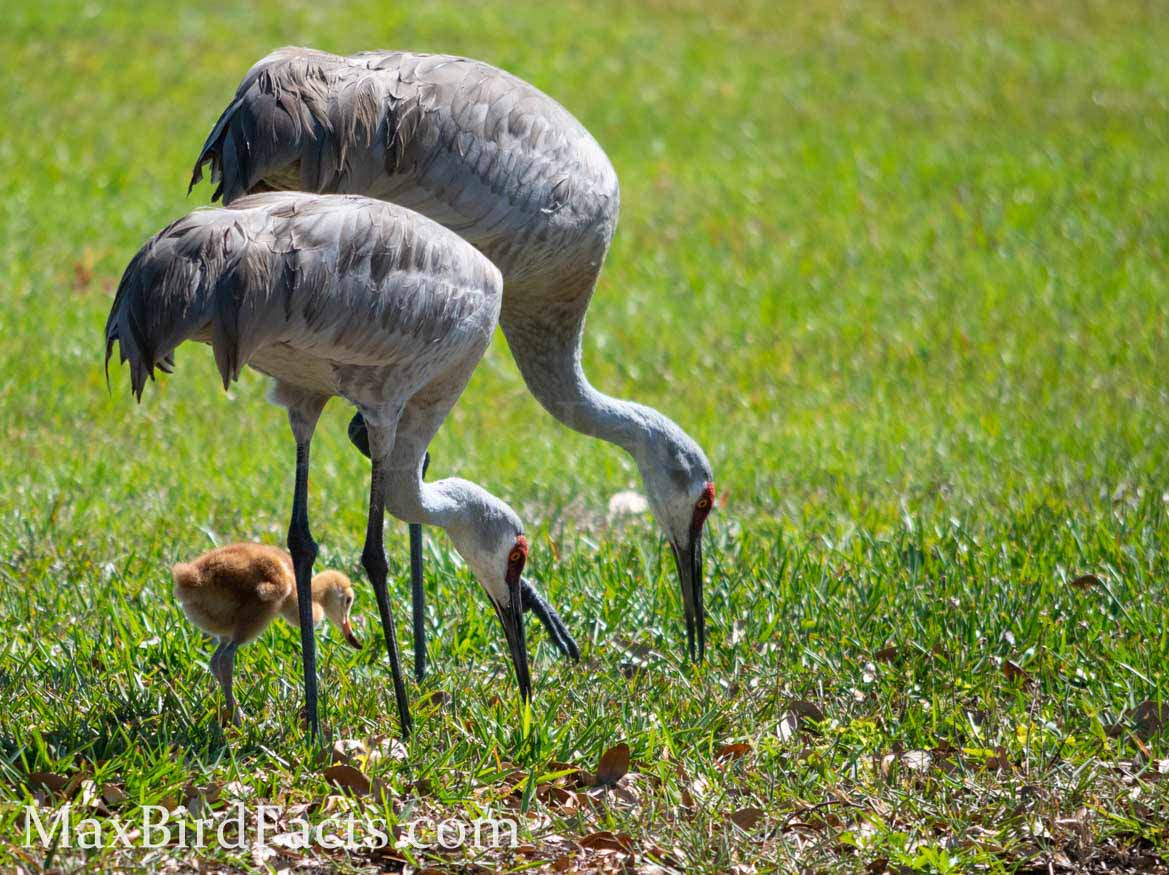
Young sandhills are precocial, meaning they are up and running within hours of hatching. Sandhill Crane chicks are called “colts” because of their tawny plumage and their ability to run almost as soon as they hatch.
Because of this, the parents will have to keep up with them to ensure they don’t get into any dangerous situations. The colts will be very curious and explorative, just like any young animal. However, they can’t fly until they are about two months old, so the parents will have to stay grounded nearly that entire time to protect them.
This behavior of leaving the nest so early and at such a vulnerable state requires both parents to work together to keep their young safe cooperatively.
Overall, the relationship between the male and female cranes is very unified. Both will work to build their nest, and they will return to the same nest site year after year. Both parents also share the responsibility of incubating the eggs over their month-long gestation.
Once the clutch hatches, the real work starts, especially here in Florida. There are countless perils these cranes have to face before they can even fly. Raccoons that raid nests, raptors that swoop down to snatch colts, and alligators that snap at larger cranes will mold the young birds into the enduring species they are today.

Nevertheless, because of the determination of their parents, many of these birds will fledge and learn to fly. Then they, in time, will follow the same path that their parents have and their parents before them.
Sandhill Crane’s incredibly intricate dance is an obvious sign of these birds’ intellect. But, on top of that, there are so many more subtle behaviors I’ve been privileged to witness.
In the crane-riddled cornfields of Nebraska, my dad and I watched as one young crane would start to leap above all the other’s heads while flashing its wings. And, without fail, if that young sandhill could get a few more cranes to join its jumps, they would take off and fly to another field. This would usually be followed by a handful of additional cranes taking off and yelling at the group to wait for them.
Yearlings flying overhead while practicing the calls they will need in the coming years in hushed tones, like someone humming a tune. Parents watching their sons and daughters stretch their muscles over this massive undertaking and finally have the pride in knowing they succeeded when they have all made it to their nesting grounds.
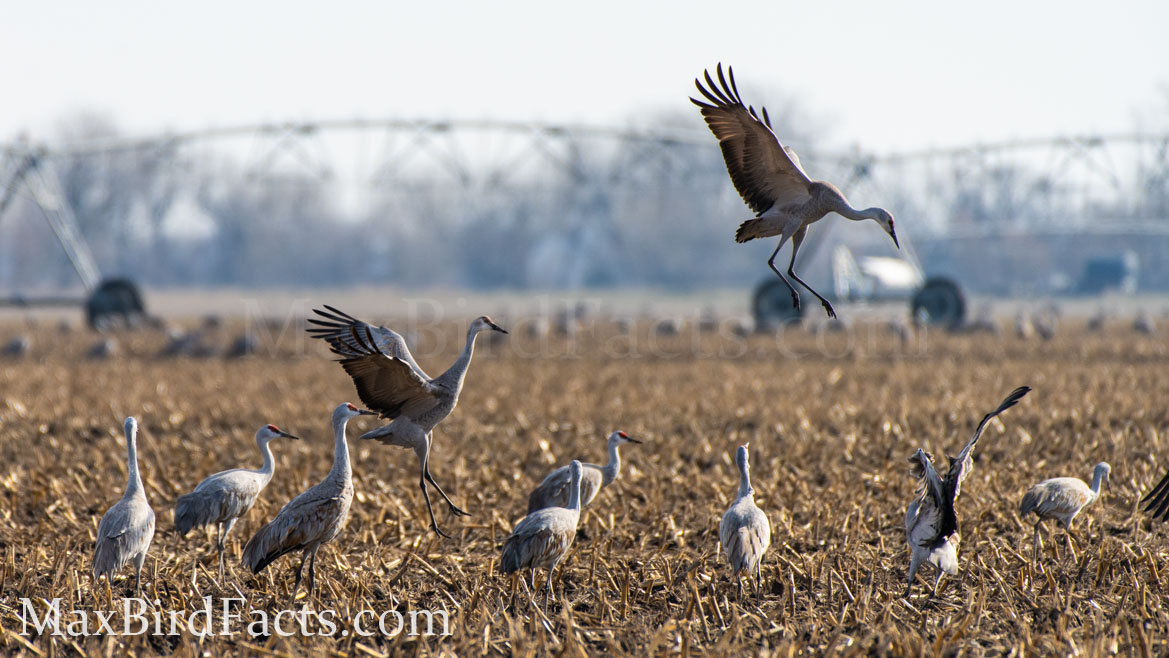
Now We Know Why Sandhill Cranes Mate For Life!
The reason, I believe, why Sandhill Cranes mate for life is to keep their children safe.
Since the colt is up and running virtually from the moment it enters this world, both parents need to keep up with their young to keep them safe diligently. Sandhill Cranes will maintain their pair bond throughout the year by singing and dancing together.
The benefits these birds gain from biparental care are massively outweighed by how much energy it would cost to try and raise the colts on their own. In addition, the ancestors of Sandhill Cranes recognized the threats to these young colts, and natural selection pushed them to maintain strong social bonds and true monogamy to ensure their safety.
It is somewhat hard not to personify these majestic birds and put them into a light where they appear nearly human in their behaviors. Still, I think it is almost necessary to draw those connections to understand better that we aren’t as different and unique as we might think we are as humans. I’ve done that intentionally in the sections above to make these behaviors and feats of nature more relatable and understandable.
I really hope you enjoyed reading this article as much as I enjoyed researching and writing it!
If you have any suggestions for future articles or topics, please feel free to shoot me an email or leave a comment below!
Get Outside & Happy Birding!
Max
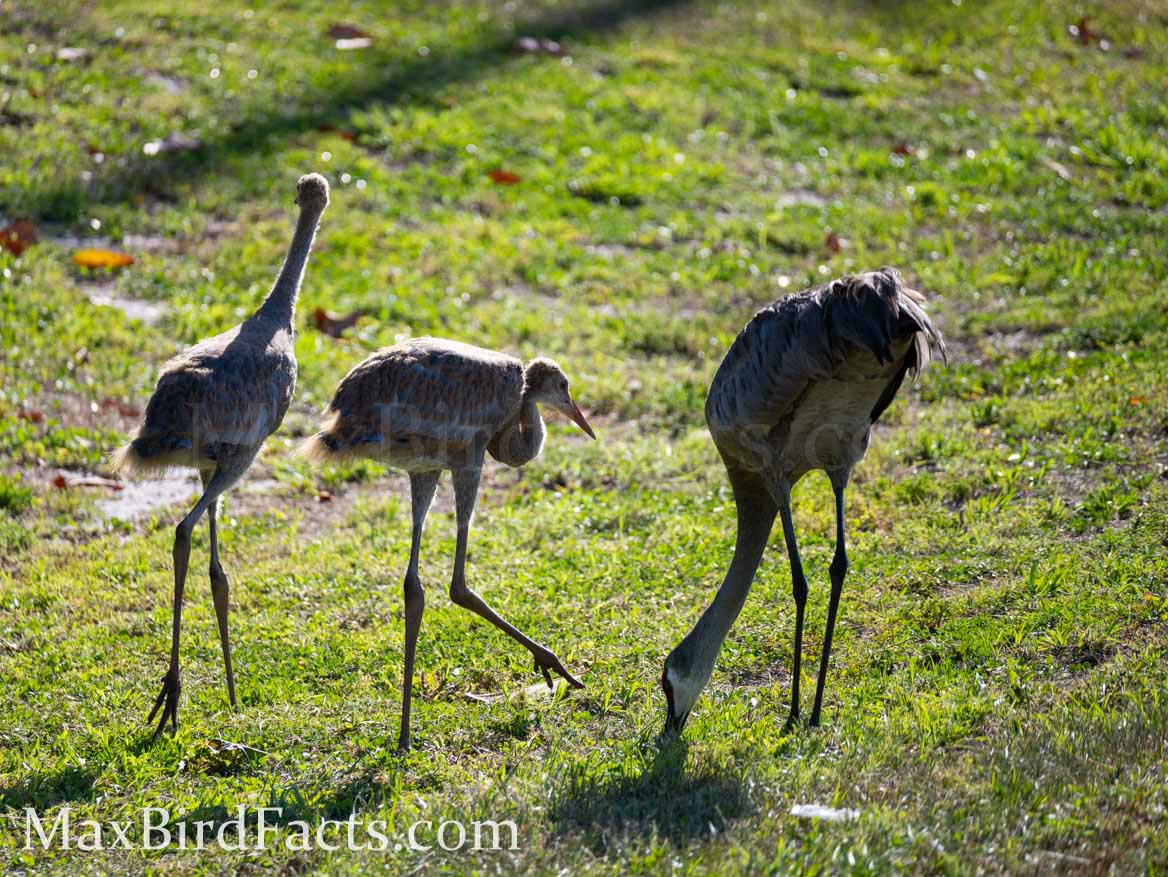
Discover more from Welcome to MaxBirdFacts.com!!!
Subscribe to get the latest posts sent to your email.
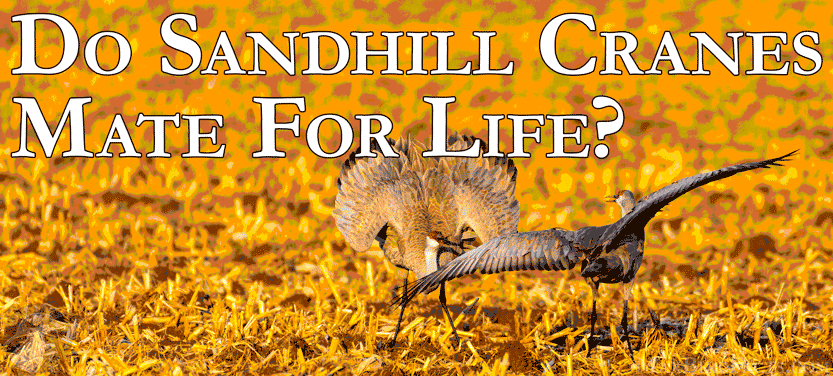
I am impressed with this web site, real I am a fan.
Thank you for this lovely and informative article. I’ve always loved witnessing the migration of the sandhill cranes and have been particularly interested in their mating and parenting habits. You’re right; it’s easy to personify them. I feel that we have many things in common with these elegant quirky characters.
Thank you for commenting and your kind words Julia! I agree; it is very easy for us to put ourselves in the minds of some of these birds and imagine how they think and feel.
Hi Max – have a question – we’ve had the same two sandhill cranes nest in the field connected to our backyard. It’s been amazing watching them care for their colts throughout the years. But something is different this year. This year another sandhill crane is hanging with them. My husband believes it’s another female. Is this common?
Hey Toni and Rick, thank you for your comment and the question! Have you had a chance to see how bright the third crane’s red crown is? This extra bird might be a colt from a previous season hanging out with its parents. I have a family of Sandhills that frequent my backyard, which is made of the mother, father, and a yearling. The two best ways to identify the young bird are through its softer, almost squeaky trills and its slightly duller red crown. Cranes that are nearly full-sized will stay with their parents until the spring migration, where they typically stick with their parents through the journey and then are kicked out after reaching the breeding grounds. Excellent observation, and I can’t wait to hear what you find! Definitely let me know if you think this third bird is a yearling or a full adult and possible extra mate!
Have you ever heard of a partner feeding it’s injured partner? I have a mating pair that have been coming around for about 5 years and about 2 years ago the female lost half of her leg. Then this year, she’s lost half of the other leg. I never see her going into the pond to feed, she’s usually just sitting in the grass. I’m convinced that he must be feeding her.
Thank you for commenting, Elizabeth! I’m really sad to hear about your injured crane. Have you tried calling your local Audubon Society or animal rehabilitation center for this bird? But to answer your question, I wouldn’t be surprised if the male is helping feed the injured female. The pair bond Sandhill Cranes have is incredibly strong, and the only thing that truly breaks it is death. The male could also be reverting into almost a parental role with his partner since she cannot forage for herself. I don’t see any other way this bird could have survived that long without some form of assistance. Thank you for sharing this! I don’t think I’ve heard of or read this behavior anywhere else.
Hi,
My name is Dick Dubbelde and I’m a cognitive neuroscientist who recently got very interested in birds. I just read through this article and I’d thought you’d like to know about this paper about the density of neurons in the avian brain: https://doi.org/10.1073/pnas.1517131113
If I remember correctly the paper doesn’t have much to say about sandhill cranes specifically, but I think you’ll find it interesting regardless.
Apologies if you’ve already seen it,
-Dick Dubbelde
Hey Dick Dubbelde,
Oh wow thank you for sharing! I’ve read some articles on the subject of bird brains and neuron density, but I haven’t see this particular one. Thank you again for sharing that link!